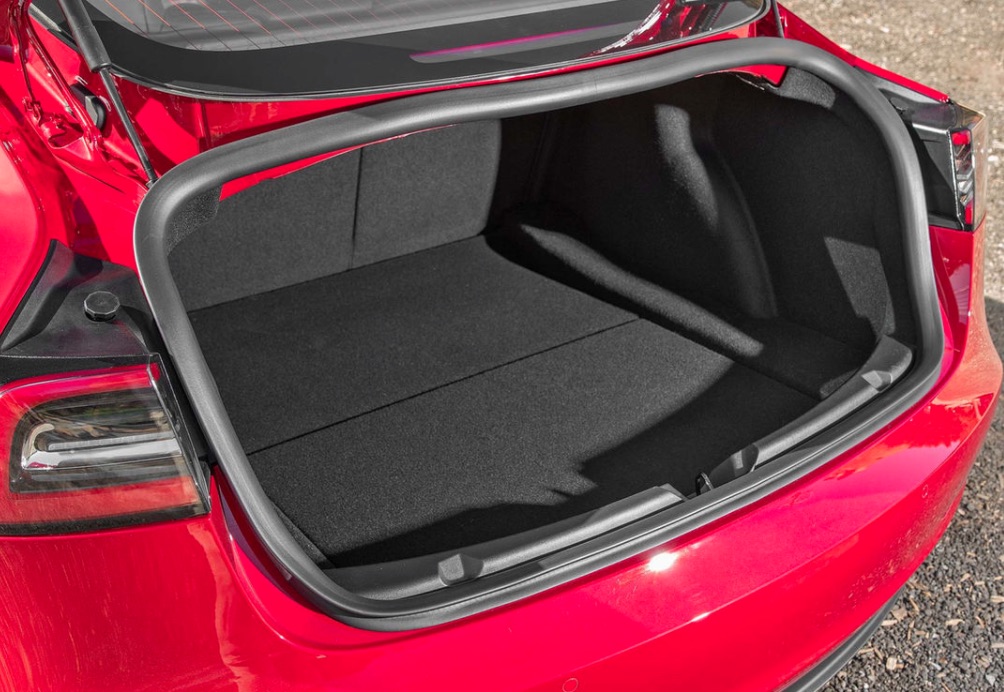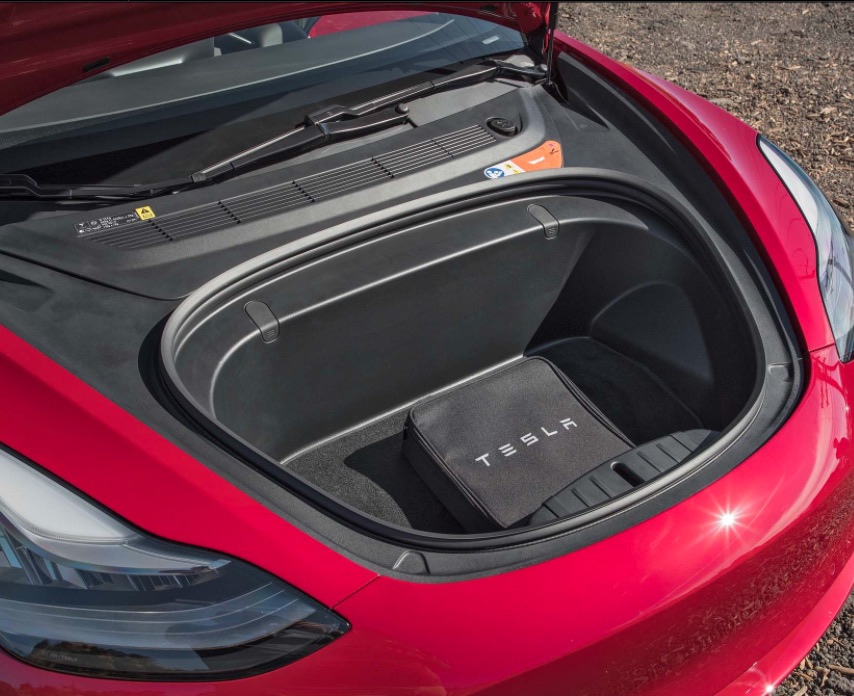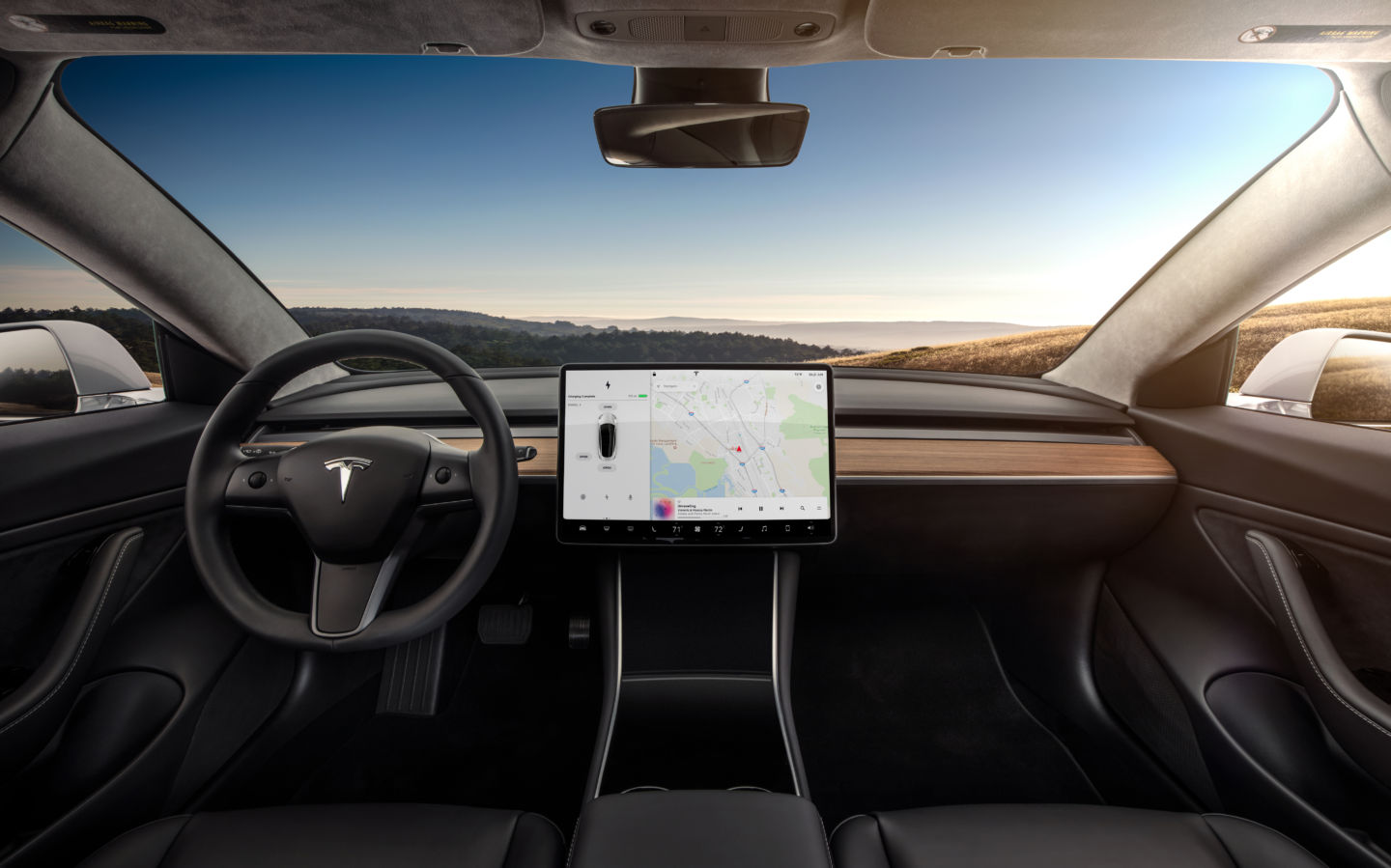The expectations on Tesla about the Model 3 are so high that Elon Musk has had to downplay the company to keep the stock from getting over-hyped. Well, I assume that’s what he’s doing when he says Tesla is probably overvalued. There’s the possibility of irrational exuberance carrying people away into craziness. While Tesla Motors seems poised to achieve huge things, it will come at a huge financial burden, and it’s uncertain they’ll succeed, and so on. In any case, getting to the point of DELIVERING the long-promised Tesla Model 3 is a big deal, and we need to do an evaluation now that we have specifications and costs.
Not having seen the car in person, I’m limited to staring at the Tesla Model 3 specifications![]() and pondering. We’ve been seeing “spy shots” for months now, and in that regard there’s nothing new perhaps to learn. That is, it’s a box on four wheels in the shape of a Sedan. It looks okay, it looks like a Model S that’s shrunk a bit. I’m not the best person to evaluate the looks of a car, because to me they’re all just boxes on four wheels with very few exceptions.
and pondering. We’ve been seeing “spy shots” for months now, and in that regard there’s nothing new perhaps to learn. That is, it’s a box on four wheels in the shape of a Sedan. It looks okay, it looks like a Model S that’s shrunk a bit. I’m not the best person to evaluate the looks of a car, because to me they’re all just boxes on four wheels with very few exceptions.
Cargo space
Speaking for myself I’m sad that they couldn’t see their way to keeping the rear roofline level so there could be a proper hatchback in the back. C’mon, that would be far more practical than this, especially given their decision to have a tiny entrance to the rear trunk. The Model S style of hatchback is eminently useful even without keeping the rear roofline level. Tesla’s engineers would likely tell me the rear roofline slopes for aerodynamic purposes, and that may well be true, but I want more cargo space and the practicality of a larger rear door.
Tesla rates the Model 3 at 15 cubic feet of cargo space, where the Nissan Leaf has 23.6 cubic feet of cargo space. That’s what I’m talking about, that cargo space is eminently practical. The Chevy Bolt EV has 16.9 cubic feet of cargo space with the rear seats in the normal position. What’s not clear from the Model 3 specs is how the cargo area is distributed. Presumably the car has a Frunk, and the specified volume is split between Frunk and Trunk.
UPDATE: Here’s a couple pictures from a preview by Motor Trend![]() .
.

The trunk area is improved over the earlier prototype vehicles in that this opening is larger. But it is still flawed in that the opening is relatively small. The space looks cavernous so maybe it’ll be sufficient. What’s not shown here is that this flat surface contains an access panel to another lower segment to the Trunk. Meaning that the trunk can store a bit more than this picture shows. Additionally the rear seats fold down (not flat) allowing you to carry longer things so long as you don’t need the rear seat for passengers.

As the former owner of an electric-conversion 1972 VW Karmann Ghia, I have to roll my eyes and sigh with the word “Frunk”. Tesla Motors did not invent the idea of a cargo area in the front of the car. I believe Volkswagen holds that honor.
In any case here’s the Frunk of the Model 3. Ergo, it’s there, and it looks useful.
Charging
It comes standard with Supercharger capability, and therefore Tesla is continuing the use of a proprietary charging connector. The car comes with the “Mobile Connector” and adapters for NEMA 14-50 (240 volt 40 amps continuous), NEMA 5-15 (120 volt), and a J1772 adapter to use regular public charging stations. Using CHAdeMO stations will require Tesla’s adapter. No word on a ComboChargingSystem adapter but given Tesla’s membership in the alliance promoting high-speed CCS charging perhaps they’re working on such an adapter.
The base model with the 220 mile range battery pack is described as having a 32 amp maximum charging rate on 240 volt Level 2. Moving to the long range battery pack, 310 miles range, curiously increases the Level 2 charge rate to 40 amps. I can’t think of a technical reason why Tesla would limit the Level 2 charge rate, so this is very curious. The practical difference is 30 miles range per hour of charging versus 37 miles range at 40 amps.
That number, 30 miles range gained per hour of charging at a 32 amp charging rate, is also curious. For most electric cars the rule of thumb is 20-25 miles range per hour of charging at 32 amps. Curious.
The lack of Dashboard

I really don’t understand how they could have possibly thought this was a good idea. WTF????? There is supposed to be an information display in front of the driver. WTF??? This makes zero sense. WTF????
This reminds me of a joke about how Ken Thompson would design a car. Thompson was part of the team at AT&T’s Bell Laboratories which designed the Unix operating system. He was the developer of the “ed” editor whose sole error message was to print “?”, because the experienced user will know what went wrong. Ken Thompson’s car would be like this:
Ken Thompson has an automobile which he helped design. Unlike most automobiles, it has neither speedometer, nor gas gage, nor any of the numerous idiot lights which plague the modern driver. Rather, if the driver makes any mistake, a giant ? lights up in the center of the dashboard. The experienced driver, he says, will usually know what’s wrong.
Cost
Reports seen tonight suggest the Tesla Model 3 interior is kinda “spartan”. To be precise “more spartan than the Model S or Model X”, but that’s to be expected since they are expensive luxury cars where the Model 3 is closer to the cost of a regular Sedan. As we consider the cost to pay for the Model 3 of ones dreams, we have to take into consideration the usability of the base model.
The $35,000 MSRP buys you a 220 mile range, reasonable speed, Supercharging, the spartanesque interior, six front row and two side curtain airbags, and entry-level autopilot features including collision avoidance and automatic emergency braking.
The default color is “Solid Black”. I’m sure it looks okay, but from a safety standpoint I believe Black to be a poor choice of color. It tends to blend into the background of road surfaces, and is harder to see at night, and therefore you’re more likely to get hit by other drivers. Other colors stand out better, and it looks like other colors cost $1000.
The $5000 premium package adds some creature comforts, but I don’t see anything that says to me it’s worth the $5000. It seems none of the interior options involve leather, so that means the Vegan Lobbyists have been able to persuade Tesla to stop using leather.
The $9000 battery pack upgrade does more than just increase range to 310 miles. It increases the Supercharger speed to 170 miles per 30 minutes of charging from 130 miles per 30 minutes, and increases the Level 2 charging rate to 40 amps. The top speed and 0-60 times also get bumped up.
There is no option for a dual motor upgrade, or a performance upgrade. Maybe Tesla will develop those options later?
The enhanced autopilot ($5000) adds the same capabilities as is in the Tesla Model S. Namely: match speed to traffic conditions, keep within a lane, automatically change lanes, transition from one freeway to another, exit the freeway and self-park at your destination. This is the feature which has lots of people confusedly thinking Tesla has developed self-driving-cars when “all” they’ve done is deliver highly advanced driver assist features.
The full self-driving capability ($3000) doesn’t do anything today, since the feature is still not finished and definitely is not legal by motor vehicle regulations. Why, then, is Tesla Motors collecting money for a feature they’re not allowed to enable? WTF? When they do enable it, “Model 3 will be capable of conducting trips with no action required by the person in the driver’s seat.”
The car comes with all the hardware for full autonomy. The fee’s shown here are to add the software to turn on the features.
Bottom line — from my perspective the cost would be $35,000 for the base car, and $1000 for a different paint color. The battery pack and autopilot upgrades are tempting. That raises the price to $45,000 or $50,000. The rest? Meh. Fully fleshed out the price is about $58,000.
- Is there enough Grid Capacity for Hydrogen Fuel Cell or Battery Electric cars? - April 23, 2023
- Is Tesla finagling to grab federal NEVI dollars for Supercharger network? - November 15, 2022
- Tesla announces the North American Charging Standard charging connector - November 11, 2022
- Lightning Motorcycles adopts Silicon battery, 5 minute charge time gives 135 miles range - November 9, 2022
- Tesla Autopilot under US Dept of Transportation scrutiny - June 13, 2022
- Spectacular CNG bus fire misrepresented as EV bus fire - April 21, 2022
- Moldova, Ukraine, Georgia, Russia, and the European Energy Crisis - December 21, 2021
- Li-Bridge leading the USA across lithium battery chasm - October 29, 2021
- USA increasing domestic lithium battery research and manufacturing - October 28, 2021
- Electrify America building USA/Canada-wide EV charging network - October 27, 2021












